#conceptual practice
Explore tagged Tumblr posts
Photo
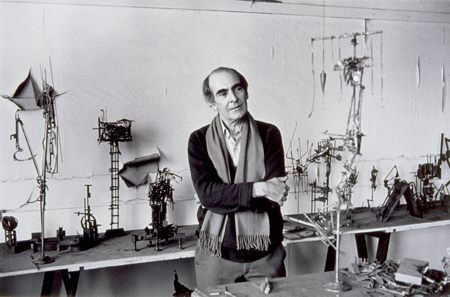
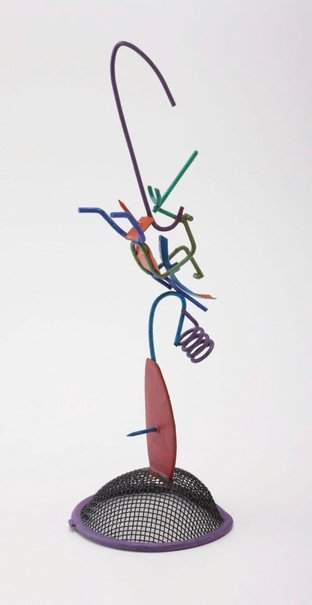
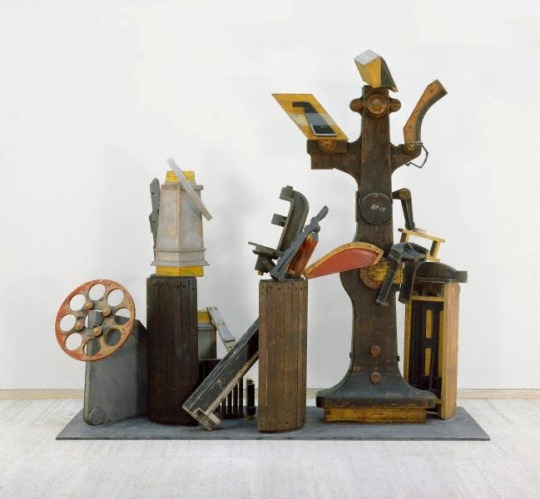
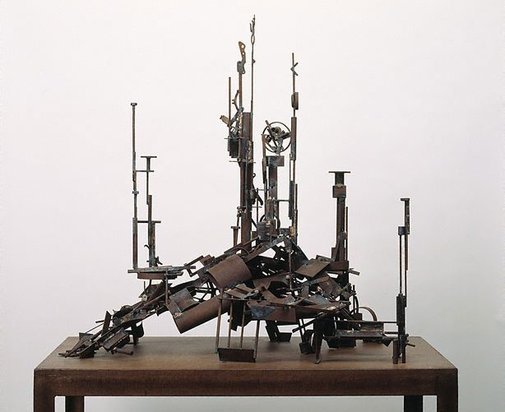
Klippel with assemblages in his studio
Number 1060, (1995) painted wire, tin 22.5 x 7.6 x 7cm
Number 714 - Prototype for Adelaide Plaza (1988) Construction of brazed and welded steel, geometric sections, found objects, formed sheet metal. 69.5 x 64 x 49.5 cm without base
Number 329, (1977) assemblage of collected wood parts 300 x 350 x 135cm
search @www.artgallery.nsw.gov.au
A Klippel's practice exeplifies the interconnectedness of the conceptual and the material. His bodies of work explore the relationship between the organic and the mechanical.
B By the time Robert Klippel died in Sydney in 2001, aged 81, he was critically acclaimed and well collected in his home country. But as with most Australian artists, although he had lived for stints in Europe and the US from the 1940s until the 1960s, his work was largely unknown abroad.
Eleven years on, his son has secured a blue chip shot at changing that. Klippel junior has signed Galerie Gmurzynska in Zurich as the sole representative of his father’s estate worldwide, catapulting the artist into the company of Pablo Picasso, Yves Klein, Alexander Rodchenko and David Smith, whose estates the gallery also represents.
Some of Klippel’s large wooden sculptures have already been on the Gmurzynska stand at Art Basel, Art Basel Miami and ArtHK, and a substantial publication and exhibition is being planned for the coming year.
Klippel is the only Australian artist to have been taken on by the 50-year-old gallery, which is best known for introducing the Russian avant garde to western Europe and for representing modernist artists working up to 1980.
“We have a solid reputation for scientific research, and for promoting interesting, important historic figures who have created something authentic but who have not had the exposure they should have had,” says gallery co-owner Mathias Rastorfer.
Klippel, an abstract artist and loner not easily slotted into one particular movement, was loosely influenced by surrealism, cubism and constructivism.
According to Deborah Edwards in the 2002 Art Gallery of NSW retrospective catalogue, “his attitudes to art making were grounded in European modernism and postwar intellectual thought”. It is for this reason, in part, that Gmurzynska was interested in taking him on.
Rastorfer says: “We found him very interesting due to his connection to the constructivists, his Polish origins, his time in America. The more you go into Klippel, the more modernist links you find.
“We will introduce his work in the context of those peers, taking him out of the Australian context and putting him into an international one. We want to show where he fits in worldwide.”
Klippel’s bronze sculptures have been the most collectable in Australia. They appear regularly on the secondary market and can fetch more than $100,000. The top price paid at auction – $507,800 – was in 2006 for a miniature steel, tin, acrylic paint and coloured paper collage.
Gmurzynska plans to use the large, wooden sculptures and tiny coloured plastic ones that Klippel did in the late 1980s and early 1990s to introduce him internationally. This is in part for practical reasons, because this is most of what is left in the estate, but also because he thinks these will work best there.
Rastorfer expects to take at least three years to achieve traction internationally for Klippel. “One of the biggest temptations is to sell the four or five most important works straight away, because that’s the easiest thing to do,” he says. “But then the estate is left with the lesser known work and often doesn’t know what to do with it.
“It’s about placement in museum collections, in significant private collections, and with opinion makers, not just about selling. If we show him in the context of his better- known peers, the rest will follow.”
There are no guarantees the strategy will work, but Andrew Klippel is quietly excited that his father, to whom he was very close, is getting a posthumous chance at an international career.
After years in the music business, where things happen very quickly, his foray into the visual arts is teaching him a new virtue: patience. “This is a long play.”
Katrina Strickland http://www.afr.com (2012)
2 notes
·
View notes
Text
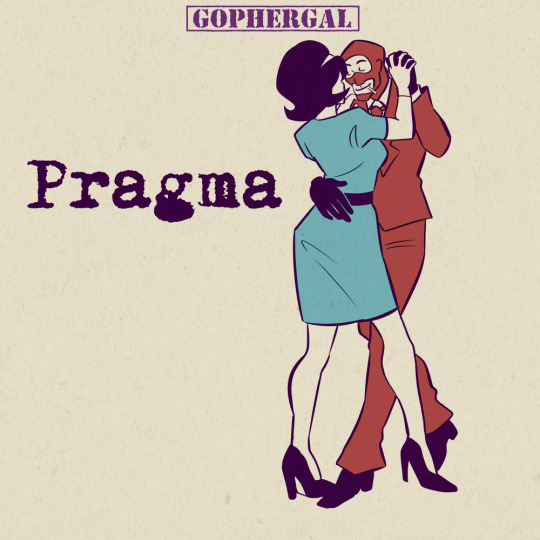
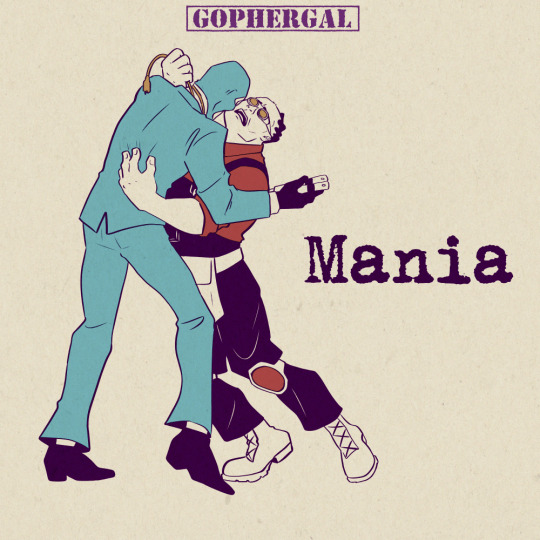

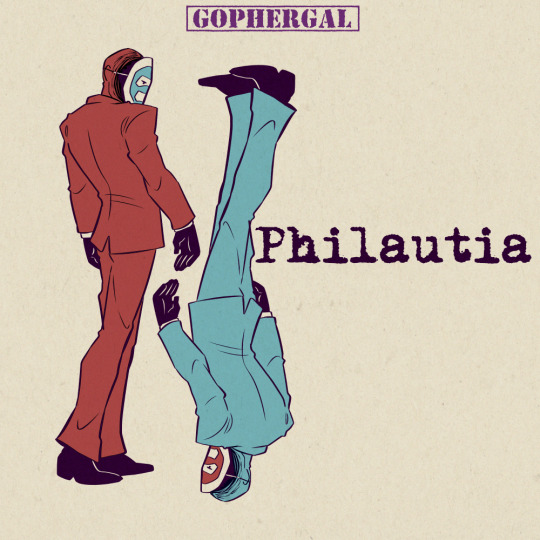
there are many kinds of love
TFTober 3 - Relationships

#gopher art#tf2 spy#scouts ma#tf2 engineer#tf2 scout#tf2 spyma#practical espionage#spydad#tftober#team fortress 2#conceptually that last one is kinda Double Agent adjacent but eh#Pragma = Enduring Love. Mania = Obsessive Love#Storge = Familial Love. Philautia = Love of the Self#this prompt was a wee bit of a struggle because I like so many ships- platonic and romantic both#but I fucking LOVE the variety in spy's relationship dynamics. I want to put him in the fucking blender so bad
642 notes
·
View notes
Text
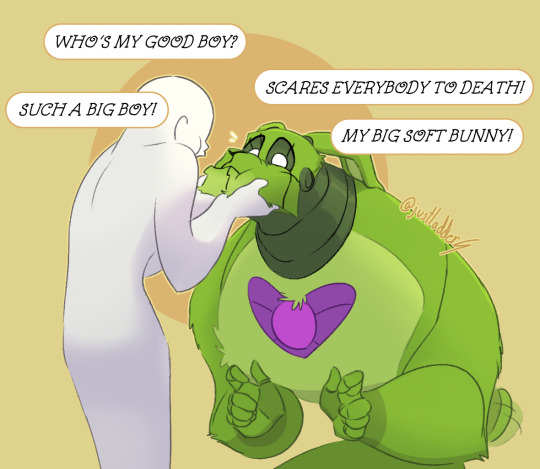
a friend very threateningly told me "I will baby talk your springtrap" so
#obviously yes im still changing the design around including changing it from this one#im kind of just testing things by drawing them out bc i always find them looking different conceptually vs in practice#so enjoy a bunch of variations for a while#fnaf#springtrap#yn insert#springtrap x reader#laddersarts
669 notes
·
View notes
Text
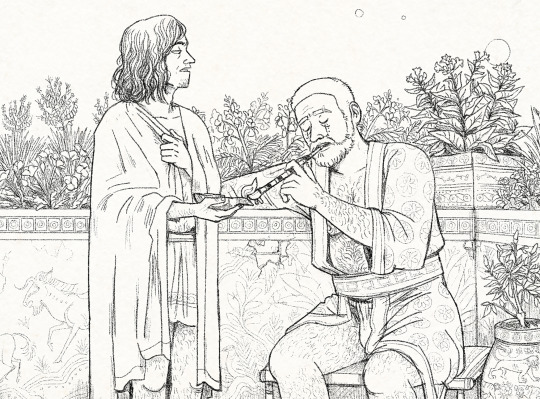
This was going to be a panel of a little comic but I got too invested in drawing minute background details so, here.
#They are having an argument over 1) whether crops can be grown on the moons 2) what - if any - impact does this have on the feasibility#of an afterlife being located on the moons#Brakul is a partial convert to the Imperial Wardi faith but this mostly entails having adopted the seven faced God (and some#other elements of the belief system) into his worldview and participating in expected rites while retaining his central#ancestor veneration practices completely unchanged and mostly prioritized.#This doesn't actually cause much friction in of itself with the big exception being disagreements on the afterlife#Wardi practices surrounding death prioritize proper handling of the corpse and funerary rites in order to get the dead where they#need to be- death is a fraught transition from one state to another. analogous to birth. The role of the living is to get the dead through#this transition (preventing them from being stuck earthbound as earthbound ghosts - which is the Bad afterlife). Once the dead#make it to the moons that's it. They don't really interact with the living. There's plenty of conceptualization of what it's Like#in the lunar lands but the cultural priority is not even slightly on the Logistics of existence there.#Whereas the CORE of religious practice among the Hill Tribes is ancestor veneration - ancestors remain interactive with the living#and require/desire their continual support. They are conceptualized as having earthlike 'lives' where they eat and drink#and grow crops and herd livestock and they need the support of the living (in prayers and offerings) to do so prosperously.#There is a HIGH cultural priority on the logistics of their afterlife and it's self-apparent that the world of the dead needs fertile earth#to support them.#So like bottom line Brakul thinks there's no goddamn way that the moons could support an afterlife (they are described as#barren rock that was flung into the sky during creation and certainly Look that way)#and that the Wardi are just wrong about their afterlife's location. They probably go to the celestial fields (which are located#behind the moons and stars) like everyone else#And Janeys finds this aggravating and doesn't see his fucking point but has developed a nagging concern that Brakul Could be#partly right in that the celestial fields could Maybe exist in addition to the lunar lands.#So like maybe they aren't going to go to the same place when they die?#He's already terrified that he'll be stuck as an earthbound ghost and really doesn't want to be even further separated so#he figures he should make sure he gets himself dead and cremated at the same time as Brakul so they can navigate the#transitional period together.#Brakul is unconcerned because he figures that if Janeys actually does get stuck on those barren ass moons he can just kinda#Go Get Him#Ancestor spirits fly to the earth all the time and the moons would be a much shorter distance. Probably wouldn't be an issue.#Long story short these disagreements and underlying anxieties result in fights over whether you can grow corn on the moons or nah
145 notes
·
View notes
Text

In Time and Stars
#in stars and time#isat#siffrin#josh art tag#been wanting to practice less “literal” drawings....#like people doing a certain thing or being in a certain place or even just standing there#and instead do more like conceptual stuff?? idk how to word it#but i love doing stuff like this#and i feel like i havent done it in a while#i think last time i did was early in the year when i was still really into the Magnus Protocol#and was illustrating lines from each episode#some of which are my best performing art ever lol#i still remember my sibling telling me they had come across my art on their dash and later on their insta explore page#they had apologized since me and my sibs have an agreement to not search for or interact with each other online just for privacys sake#but i found it both funny and kinda insane#was not expecting my art to get big enough to find its way to that sib lol#uuuhhhhh anyway back on topic#ive had this idea of a siffrin illustration where either have their face or the back part of their head being a clock#and i tried a couple drafts in my sketchbook#and ended up liking this one! it had the addition of the shooting star and from then i toyed with the idea of adding the title text#i have another less literal piece for zelda that i wanna do#but i also wanna work on my isat animatic#....and i also wanna play stardew....#i need more hours in the day 😔
87 notes
·
View notes
Text
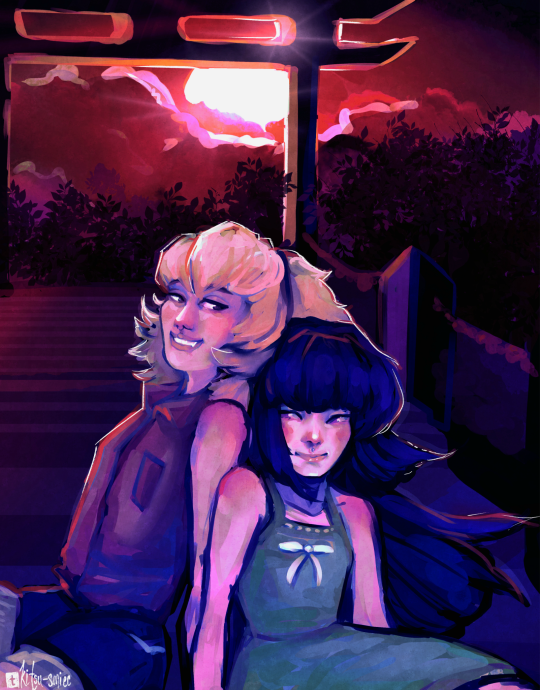
Satoko and Rika :)
May they find eachother in every universe.
#my art#digital art#digital painting#digital drawing#art#higurashi#higurashi rika#higurashi satoko#my bf pointed out how dark all my art is (like actual dark not metaphorical)#but i waaaant it to be atmospheric#totally not bc i cant conceptualize lighter colors and suck at them#i should make brighter pieces for practice tbh#and ye sorry they look a bit older i dont know how to draw kids
83 notes
·
View notes
Text
penny dreadful would have been so good if it were good
80 notes
·
View notes
Text
so he just wants to eat me out and doesn't want penetrative sex or reciprocal oral or a relationship or anything, just literally wants to eat me out for hours and 'hone his craft'..................... am I nuts to be considering it
#this is an old friend i used to study with who recently got a job here and moved to a town 20min away by bus#i let him once. he's ok at it. i do think dedicated practice would be good for him and for whoever his next meal is.#and when he did last time his enthusiasm and endurance nearly made up for the faults in his technique#maybe im trying to rationalise it because I just want my pussy ate on the regular and the earliest thatd happen again otherwise is winter#and ngl conceptually it's pretty hot. if he does train up then this could be a great investment.#it's not like im going to date again before finishing my thesis so...#but i also had a friend who enjoyed a similar deal with her ex and i ended up feeling put off by how that dynamic turned out by the end#hmmm. things to think about while daydreaming about grinding his face into a smooth sanded plane using only my pelvis.
30 notes
·
View notes
Text
read in 2025!
it's that time again! i've been doing reading threads here since 2022, and i always enjoy them. as always, you can find me on goodreads and the storygraph.
The Murder of Roger Ackroyd by Agatha Christie* (★★★★★)
Winter Hours: Prose, Prose Poems, and Poems by Mary Oliver (★★★★★)
The Bear and the Nightingale by Katherine Arden (★★★★☆)
Moon of the Crusted Snow by Waubgeshig Rice (★★★☆☆)
The Examiner by Janice Hallett (★★★★☆)
The Girl in the Tower by Katherine Arden (★★★★★)
A Vindication of the Rights of Woman by Mary Wollstonecraft
Just Another Missing Person by Gillian McAllister (★★★☆☆)
Beartown by Fredrick Backman (★★★★★)
White Tears/Brown Scars: How White Feminism Betrays Women of Color by Ruby Hamad (★★★★★)
Killer Potential by Hannah Deitch** (★★★★☆)
Alive at the End of the World by Saeed Jones (★★★★☆)
The Winter of the Witch by Katherine Arden (★★★★★)
Notre-Dame de Paris by Victor Hugo (★★★★☆)
Assata: An Autobiography by Assata Shakur (★★★★★)
Parable of the Sower by Octavia E. Butler (★★★★☆)
Perfect Victims: And the Politics of Appeal by Mohammed El-Kurd (★★★★★)
The Fire Next Time by James Baldwin (★★★★★)
The Message by Ta-Nehisi Coates (★★★★★)
Famous Last Words by Gillian McAllister (★★★☆☆)th
The River Has Roots by Amal El-Mohtar (★★★★☆)
Direct Descendant by Tanya Huff** (★★★☆☆)
When She Was Me by Marlee Bush (★★★★☆)
All In Her Head: The Truth and Lies Early Medicine Taught Us About Women’s Bodies and Why It Matters Today by Elizabeth Comen
The Ballad of Songbirds and Snakes by Suzanne Collins* (★★★★★)
David Copperfield by Charles Dickens (★★★★★)
Sunrise on the Reaping by Suzanne Collins (★★★★★)
Letters to a Young Poet by Rainer Maria Rilke
Bright Young Women by Jessica Knoll (★★★★☆)
Hungerstone by Kat Dunn (★★★★☆)
The God of the Woods by Liz Moore (★★★★☆)
The Hurting Kind by Ada Limón (★★★★★)
The Familiar by Leigh Bardugo (★★★★☆)
The Eights by Joanna Miller** (★★★☆☆)
Howl and Other Poems by Allen Ginsberg
*An asterisk denotes a reread. **Two asterisks denote an ARC.
#reading thread#talking to strangers#four books in already!!! i have set a relatively low goal for myself (30 books) because my goals are less numerical and#more about expanding my horizons / reading genres i usually don't / reading books that have been on my tbr for a long time#i'm off to a strong start for the year but i also know i tend to start off really well and then slump hard a few times later on#so we will see how it goes! anyway my thoughts on my first 4 books#i always start my year off with a reread of an old favorite so i know i'm starting with a 5 star read <3 hence the roger ackroyd reread#now not to brag or anything but i figured out who the murderer was the very first time i read roger ackroyd...#still absolutely diabolical though. second greatest mystery novel of all time (orient express will always win first place)#winter hours was good! very thought provoking and really made me want to write which is always great#the bear and the nightingale!!! i really enjoyed it and yes i did cry. i got the sequel from the library yesterday hehe#moon of the crusted snow was alright! i liked it a lot more conceptually than i did in practice tbh#anyway <3333 happy reading in 2025 besties!!!!
17 notes
·
View notes
Text
the biggest problem i had with my boromir lives fic is that i talked about where it was going & came to the conclusion that
it was Gondorian factional politics and
i didn't want to do that
56 notes
·
View notes
Photo
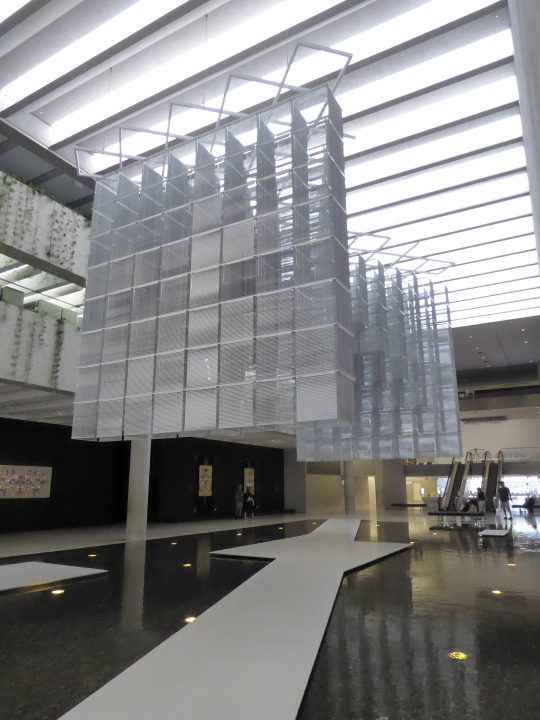


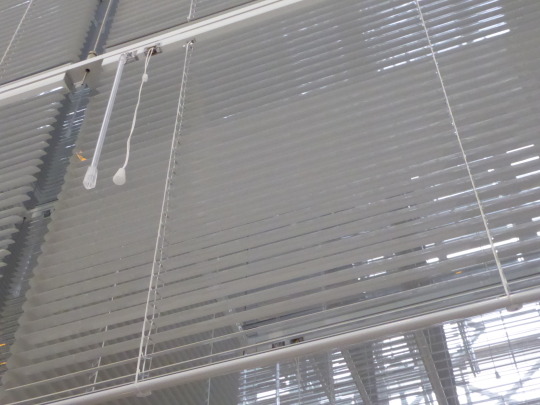


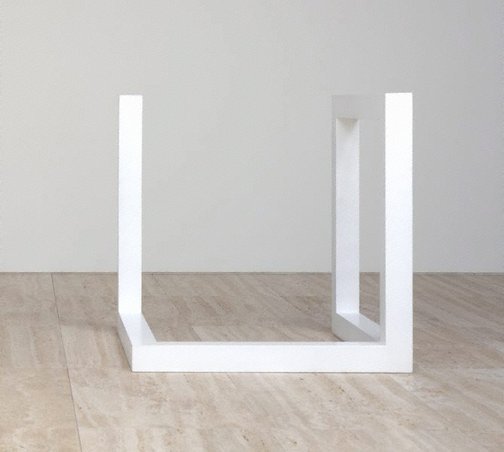
1 Haegue Yang (born 1971) lives and works in South Korea, Germany
Sol LeWitt Upside Down - Open Modular Cubes (Small), expanded 985 Times (2015) aluminium venetian blinds
the artist’s site www.heikejung.de/
search at www.guggenheim.org
A www.qgoma.qld.gov.au Referencing modernist art history, literature, and social and political events, Haegue Yang transforms spaces through light, colour, objects and movement so that they are constantly shifting and directing our experience. Sol LeWitt Upside Down — Open Modular Cubes (Small), Expanded 958 Times (2015), uses everyday domestic materials — in this case over 1000 Venetian blinds — to create a formal, immersive structure. For Yang, abstraction is highly metaphorical, alluding to multiple narratives. Her blinds partially block sight, but they also delineate and draw attention to a space, providing boundaries and articulations, and implicating viewers through their transparency and domesticity. In her early sculptures she used IV stands, then clothes-racks on wheels. Like the blinds, these industrially produced items were deliberately evocative of anthropomorphic forms, while also emphasising a sense of movement and the imminent possibility of change.
2 Sol LeWitt (1928-2007) USA Incomplete open cube 7/21 (1974) 106.7x106.7x106.7cm enamel on aluminium
B www.artgallery.nsw.gov.au The ‘Incomplete open cubes’ are a sequence of open-sided cube structures, each missing between one and nine of their sides. At once repetitive and varied, this series lays out 122 possible variations on the concept. The ‘Incomplete open cubes’ exemplify LeWitt’s conceptual practice and have been widely interpreted as embodying systematic rationality; they are based on an arithmetic concept which they then take to its logical extreme. While they are internally consistent, they also manifest an irrational, obsessive quality reflected in LeWitt’s own comment that ‘irrational thoughts should be followed absolutely and logically’. Here he presents a binary between the rational and the irrational.
WATCH Sol LeWitt's Incomplete Open Cubes www.youtube.com/watch?v=w9ROCnWMPww
#haegue yang#sol lewitt#QAGOMA#APT#contemporary practice#installation#post modern frame#appropriation#minimalism#conceptualism#conceptual practice#found object#modernism#modernist practice
0 notes
Text


wow I wonder what could have happened around 2013 to cause this
#which the article doesn't mention at all of course#look. i can only speak to 1) math instruction 2) on the elementary school level#and middle school level#and only in the districts ive worked with#but ive said this before and I'll say it again. the current way math is taught has the same problems that balanced literacy did#kids who are naturally good at math will figure it out no matter how its taught#in fact they probably ARE benefiting a lot from being exposed a variety of strategies and conceptual thinking#the sort of stuff that would typically be reserved for a pull-out gifted/discovery/links class#but the kids who struggle with math? this does NOT help them#they dont just 'pick up' addition and multiplication facts#the ~more conceptual~ strategies dont actually lead to more conceptual understanding for them. its just a different (more complicated!)#algorithm for them to memorize#and because it doesn't come easily to them#they aren't given the necessary practice (which yes. involves repetition!!) to master any strategy#kids who can't struggle to make big conceptual leaps shouldn't be denied access to basic math skills#and i will die on the hill of 'its easier to think about complex probel#*problems and think conceptually if you aren't devoting mental resources to trying to figure out 8*7 by repeated addition
15 notes
·
View notes
Text

You know it’s bad when I remember to post this to instagram but no where else
New concept/sketch sheet, I tried out using a colored background for this one to make the drawing experience more lively. It worked but at the cost of me having to heavily saturate some of the colors here or else they’d look washed out in comparison
#art tag#digital art#my art#art#procreate#character design#procreate art#sketches#conceptual art#concept art#I went more loose with the drawings here#some of them are character illustrations but there’s also diagrams#color practices and pattern-work#no id#not described#no alt text#sorry about that but trying to write descriptions for these large sketch pieces gives me a headache#anthro cat#fantasy art
9 notes
·
View notes
Note
Ok, so since you're in gamedev, I'm curious about your perspective on patenting gameplay mechanics, like how the Ascend mechanic was patented prior to ToTK's release. I know Nintendo aren't the only ones doing this, but how common of a practice is that in general? And do you think there's any merit to it or no?
Heyyy sorry I was having a very busy week/weekend, so I kind of left this ask to the side given this is a pretty complicated subject, but here we go!!
So... Basically, my opinion is that it's mostly a bullying method for big corporations, and what seems like a tentative to protect one's work for smaller individuals/entities that they can't realistically enforce anyway. To me, and many devs, it's considered poor etiquette at the very least, especially given the highly iterative nature of gamedev and the extremely specific application of any given idea. The fact that the boundaries of tolerance and how aggressive a company will be at protecting what they feel they own (and here something as nebulous as an intellectual concept and context-less execution) will generally be blurry at best, especially since it's super hard to parse what could be considered inspiration VS what is derivative in a game mechanic, it tends to merely discourage innovation from smaller studios in that specific field, while still having bigger companies perhaps risking a lawsuit because they have already assessed they could cushion the consequences if it does come to that.
As often with copyright laws, but perhaps even moreso here, it dabbles in the corporate justice system, and it is a system that will always disproportionately protect the wealthy, the influencial and the powerful, while leaving people without resources extremely vulnerable. Imagine being a small studio trying to patent your cool mechanic, and then a giant like Riot Games waltz along and decides to steal your mechanic anyway. Can you afford the money to stay lawyered-up for years? Can you tolerate the stress of this David and Goliath situation, or existing in the public eye, or the potential smear campaigns, etc? And if you don't want to enforce your rights due to a lack of resources, your rights may as well not exist.
So I am personnally pretty much against the practice on this basis alone, even discounting how that approach runs counter to the very community-based spirit of game design and game studies. The goal of any self-respecting game designer should be to craft the best possible experience for players. It's good to protect yourself, your living, your place in history of course, but freezing the course of that history for little more than greed... It's not really well considered by a lot of devs that I know.
#thoughts#gamedev#patents#game design#of course there are counter-arguments that I'm more than willing to hear#but to me the potential downfalls of this practice far outweight the hypothetical and very circumstancial benefits#I think enforcing rules around credits and gamedev rights on the games they work on is a better approach than trying to patent stuff#(especially since patents tend to be held by companies over individuals --and losing control over a company is SO easy)#not to devalue the real engineering that goes on in really well polished/conceptualized mechanics#but tbh it's incredibly rare to have a mechanic working EXACTLY the same in two different games#there will always be things --even minor things-- that will have to be different#so it's not comparable with stealing graphic designs or exact characters or a chunk of technology imo#but that's just my opinion of course#and I'm extremely not a lawyer or a jurist or someone who knows the specifics of laws#it's mostly an opinion based on sparse research and conversations with colleagues
17 notes
·
View notes
Text

More practicing poses in drawing starring Iva again in a night beast form. Literally working out on the laptop for some original sketch base poses I sometimes did it on the IbisPaint X app via my phone.
Art and the “Long-Nosed Out” project and lore are belongs to me (C)
The Host (Iva; in my version) from the Dovhonosyky Show or The Long-Noses Show (Ukrainian: Шоу Довгоносиків) are belongs to PRO-TV (Ukrainian: ПРО-ТВ)/Viktor Prykhodko (Author and director of this show) (C)
#my art#drawing#fanart#digital art#werewolf#lycanthrope#poses#practice#medibang paint#medibang paint art#шоу довгоносиків#украрт#ukrainian#science fiction#action#comedy#alien#concept art#conceptual#character design#monster#creature#tv series#doodle#artists on tumblr
8 notes
·
View notes
Text
"the brain must be the most interesting thing to study-" if I have to learn about another center or tract or nucleus im going to LOSE IT!!!!!!
#the brain is interesting conceptually#but in practice its a lump of meat with a lot of unmarked overlapping sections#I am about to spend unreasonable amounts on coffee for the next 3 weeks. I need to be at home.
7 notes
·
View notes